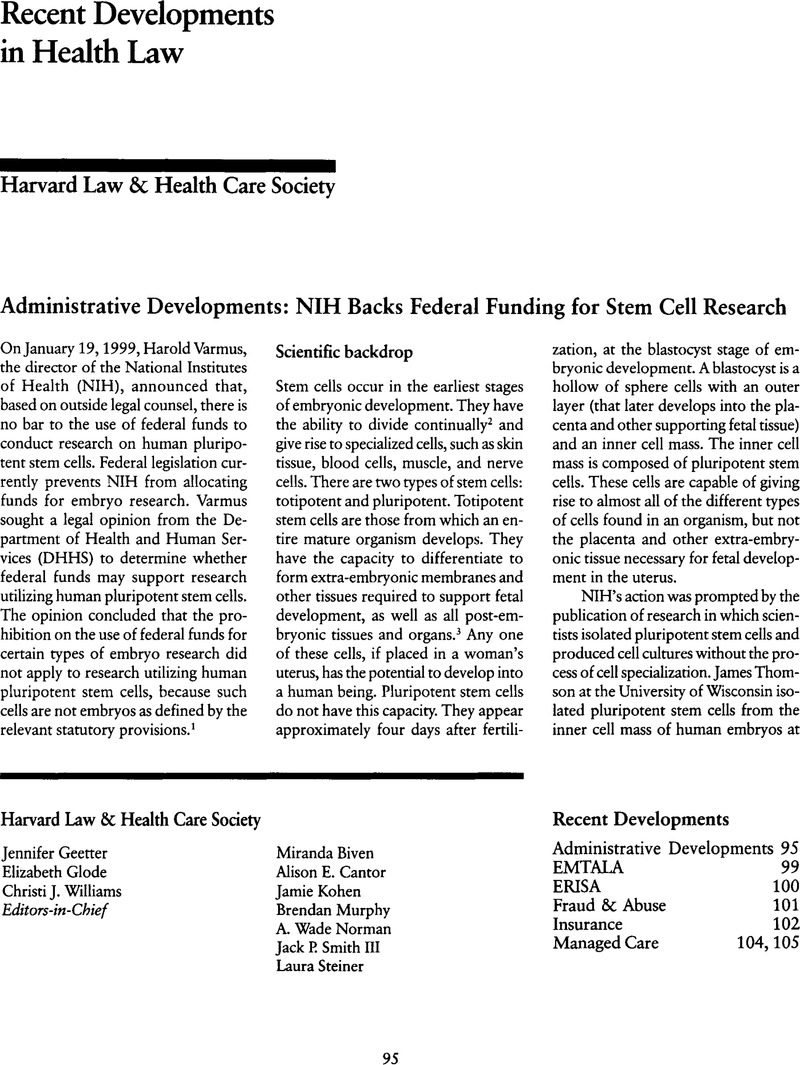Legislation in many states currently bans embryo research, to varying degrees. See Fla. Stat. Ann. § 390.0111(5) (West Supp.
1998); La. Rev. Stat. Ann. § 9:122 (West
1991); Me. Rev. Stat. Ann. tit. 22, § 1593 (West
1992); Mass. Ann. Laws ch. 112, § 12J (Law. Co-op.
1991); Mich. Comp. Laws Ann. § 333.2685 (West
1992); Minn. Stat. Ann. § 145.422 (West
1989); N.H. Rev. Stat. Ann. § 168-B:15 (
1994); N.D. Cent. Code § 14–02.2–01 (
1991); 18 Pa. Cons. Stat. Ann. § 3216 (West Supp.
1997); and R.I. Gen. Laws § 11-54-1 (
1994).
Google Scholar